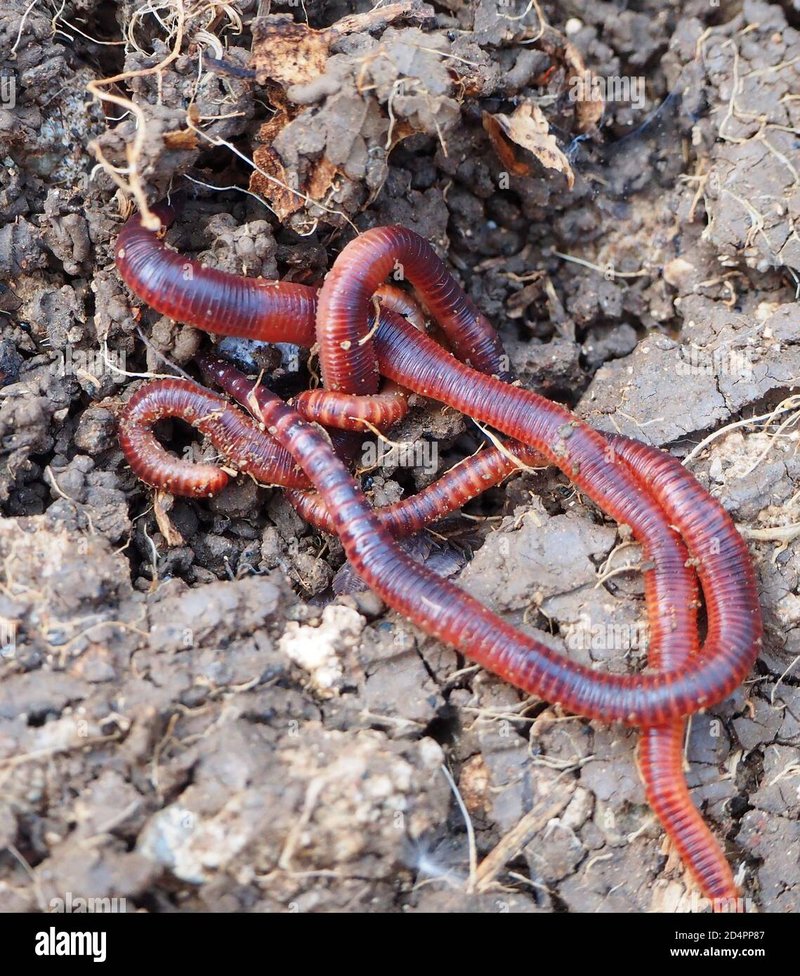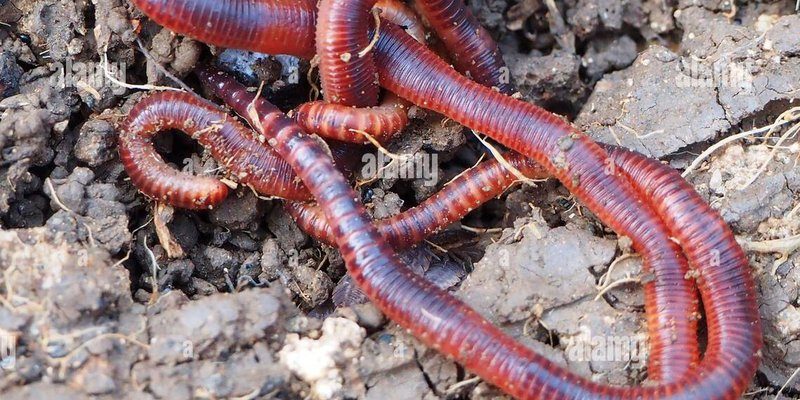
If you’ve ever watched a bird swoop down onto the grass, you might have wondered what it’s after. While it could just be taking a rest, it’s more likely looking for its next meal—one that’s slithering underground. From birds to beetles, various creatures rely on earthworms for food. Let’s dive deeper into who these predators are and what role they play in your garden.
Why Earthworm Predators Matter
Understanding the natural predators of earthworms helps you see the garden in a new light. It’s not just about plants and pests; it’s about a whole web of interactions. When you manage your garden sustainably, you’re also inviting a diverse range of species that contribute to its health. Predators do more than just limit earthworm numbers; they can affect the entire garden ecosystem.
By keeping earthworm populations in check, these predators help maintain balance. Too many earthworms can lead to soil disturbances that might not be beneficial for all plants. Plus, predators contribute to the diversity of life in your garden, which can lead to a more resilient environment overall. So, while it might seem harsh, the presence of earthworm predators is a natural part of the cycle of life in your garden.
Birds: The Feathered Hunters
You might think of birds as the charming visitors that brighten your garden with their song, but many species are also skilled hunters of earthworms. Birds like robins, starlings, and crows are known to forage the ground for this wriggly delicacy. They use their keen eyesight and hearing to detect earthworms beneath the soil surface.
Robins, for instance, are often seen hopping around lawns, tilting their heads in search of movement below. Once they spot an earthworm, they pull it out with surprising speed and precision. This behavior not only provides them with food but also aerates the soil, allowing for better water and nutrient infiltration.
So, while you might love watching them dart around your garden, remember that these feathered friends have a dual role: they’re both beautiful and beneficial, keeping the population of earthworms balanced.
The Role of Birds in Soil Health
Birds do more than just eat earthworms; they help in other ways too. By keeping earthworm numbers in check, birds support healthier soil ecosystems. Here’s how:
- Aeration: When birds dig into the soil, they create small holes that allow air and water to reach plant roots.
- Nutrient Cycling: As birds feed on earthworms, their droppings return valuable nutrients back to the soil.
- Pest Control: Many birds eat other pests too, reducing the need for chemical interventions.
In essence, birds act as natural pest controllers and soil enhancers, making them crucial allies in gardening.
Insects and Arachnids: The Smaller Predators
Not all earthworm predators are as big as birds. Many insects and arthropods also enjoy munching on these little soil workers. For example, beetles and centipedes can be effective predators, using their keen senses to locate earthworms hidden in the ground.
Beetles, especially those in the family Carabidae, often hunt for earthworms at night. They possess strong mandibles that can grasp and consume earthworms when they’re exposed on the surface. Centipedes, with their long bodies and quick movements, can also capture earthworms underground, making them formidable hunters.
These smaller predators might not be as visible, but they play essential roles in keeping the soil ecosystem balanced. By preying on earthworms, they contribute to the diversity of life in your garden.
How Insects Contribute to Soil Dynamics
While it’s easy to overlook them, insects and arachnids have significant impacts on soil health. Here’s how they contribute:
- Soil Structure: Their activity can enhance soil structure by creating channels for air and water movement.
- Organic Matter Breakdown: Many of these predators also help decompose organic materials, enriching the soil.
- Biodiversity: The presence of diverse insect species can lead to a more resilient ecosystem overall.
These contributions might seem small, but they create a ripple effect that benefits your plants and garden’s health in the long run.
Mammals: The Earthworm Foragers
When you think about earthworm predators, mammals might not come to mind immediately. However, several mammals are known to seek out earthworms in gardens. Animals like moles, shrews, and even raccoons occasionally dig them up for a snack.
Moles are perhaps the most infamous of these mammals. They create extensive tunnel systems underground, in which they hunt for earthworms. As they dig, they can inadvertently aerate the soil, enhancing its quality. While they might cause some surface disruption, their tunneling can ultimately benefit plant growth.
Shrews, on the other hand, are small, elusive creatures that also consume earthworms. Their high metabolism means they need to eat a lot, making earthworms an appealing target. Though they’re not always visible, knowing they’re part of the ecosystem can help you appreciate the balance each creature brings.
The Impact of Mammals on Garden Ecosystems
Mammals play essential roles in managing earthworm populations and enriching garden soil. Here are some ways they contribute:
- Soil Aeration: Moles’ tunneling behavior helps create pathways for air and water, benefiting plant roots.
- Natural Fertilizers: Some mammals excrete waste that adds nutrients back into the soil.
- Food Web Dynamics: By controlling earthworm populations, mammals support a balanced food web necessary for overall ecosystem health.
In this way, mammals might seem like mere nuisances when they dig, but their actions often promote a healthier garden.
Reptiles and Amphibians: The Unexpected Predators
Reptiles and amphibians aren’t usually the first animals you think of when considering earthworm predators, but they certainly play a role! Snakes, frogs, and toads are opportunistic feeders and will happily consume earthworms when available.
Frogs and toads, for example, hunt for earthworms primarily during wet conditions. Their sticky tongues are perfect for snagging these slippery creatures. Snakes, particularly those that feed on invertebrates, can also be found in gardens, using their camouflaged bodies to blend into the surroundings and catch earthworms unaware.
While they might be less visible than birds or mammals, these predators help maintain healthy populations of earthworms and contribute to the biological diversity in your garden.
The Benefits of Reptiles and Amphibians
Incorporating reptiles and amphibians into your garden ecosystem can lead to several advantages:
- Natural Pest Control: Many of these creatures also feed on pests like slugs and insects, reducing the need for chemical treatments.
- Soil Aeration: As they move through the soil, they aid in its aeration, further supporting plant health.
- Indicator Species: The presence of amphibians can indicate a healthy environment, as they are sensitive to changes in their habitat.
Fostering an environment that welcomes these creatures can make your garden more resilient and vibrant.
Maintaining Balance in Your Garden
So, how do you manage the delicate balance between earthworms and their natural predators? It’s all about creating an ecosystem that encourages biodiversity. Here are some tips to maintain that balance:
- Plant Diversity: Incorporate a variety of plants to attract different predators and provide shelter.
- Soil Health: Keep soil rich with organic matter, promoting earthworm health while allowing predators to thrive.
- Water Management: Ensure proper watering to create an ideal environment for both earthworms and their predators.
By focusing on maintaining this balance, you can create a flourishing garden that supports all its inhabitants.
In conclusion, while earthworms might be a gardener’s best friend, their natural predators play equally important roles in maintaining a healthy ecosystem. Understanding who these predators are and how they contribute to your garden will help you appreciate the intricate web of life beneath the surface. So, the next time you see a bird or a mole in your garden, remember—they’re not just visitors; they’re essential players in keeping your garden thriving.

